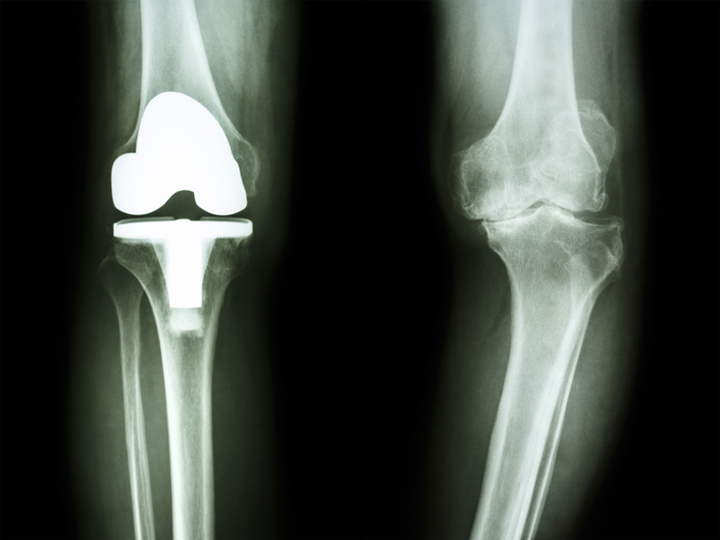Types of Orthopedic Knee Replacement Surgery | Arthritis
The surgeons at Dr. Horn Orthopedics specialize in Knee Replacement Surgery. The 2 most common types are Knee Replacement and Partial Knee Replacement Surgery.
Knee Replacement
A total knee replacement surgery involves replacing the joint surface at the end of your thigh bone (femur) and the joint surface, at the top of your shin bone (tibia). A total knee replacement may also involve replacing the under-surface of your kneecap (patella) with a smooth plastic dome. The surgeons at Dr. Horn Orthopedics prefer to preserve the natural patella if possible. Sometimes, the decision will need to be made during the surgery. If you’ve had a previous operation to remove the patella (patellectomy), this won’t stop you from having a knee replacement. It may affect the type of replacement part (prosthesis) the surgeons at Dr. Horn Orthopedics use. The new parts are normally cemented in place. If cement is not used, the surface of the component facing the bone is textured or coated, encouraging bone to grow onto it. This forms a natural bond. Another common technique utilizes a mobile plastic bearing which isn’t firmly fixed to any metal parts. This may help reduce wear and tear on your new joint.
(Unicompartimental) Partial Knee Replacement
If arthritis affects only one side of your knee, it is usually the inner side. It may be possible to have a (unicompartmental) Partial Knee Replacement.
There are three compartments of the knee:
- The inner (medial)
- The outer (lateral)
- The kneecap (patellofemoral)
When arthritis compromises one side of your knee, it may be possible to have a partial knee replacement surgery. This involves less interference with the knee versus a total knee replacement. There is usually a faster recovery time and results in better function. Partial knee replacement surgery can be carried out through a smaller incision than a total knee replacement. It is a reduced invasive or minimally invasive surgery. A smaller incision may further reduce the recovery time. Partial knee replacement isn’t suitable for all patients, as you must possess strong and healthy ligaments within your knee. Research shows that patients who have partial knee replacements are more likely to have full functionality of their knee versus those who have a total knee replacement. One in ten patients require further surgery at 10 years, with a total knee replacement.
Partial knee replacement can be considered at any age. For younger patients, it offers the opportunity to preserve more bone, which is helpful if you need revision surgery at a later stage. For older patients a partial knee replacement is ideal, as it causes less stress, pain and risk of bleeding. The outcome of the surgery, however, depends on the type of arthritis, rather than age. The surgery is only suitable for 1 in 40 people with osteoarthritis. However, the outcome of kneecap replacement can be good if the arthritis doesn’t progress.
Call Dr. Horn Orthopedics at (281) 837-8550, or Visit hornortho.com/contact/ to schedule a Consultation or Appointment today. They will help you gain back full functionality in your knee for a pain free and better life!


My sister would like to have her knees replaced because they were severely damaged. Well, I also agree with you that this type of procedure will involve the removal of the patella. Thank you for clarifying here as well that a smaller incision may occur too.